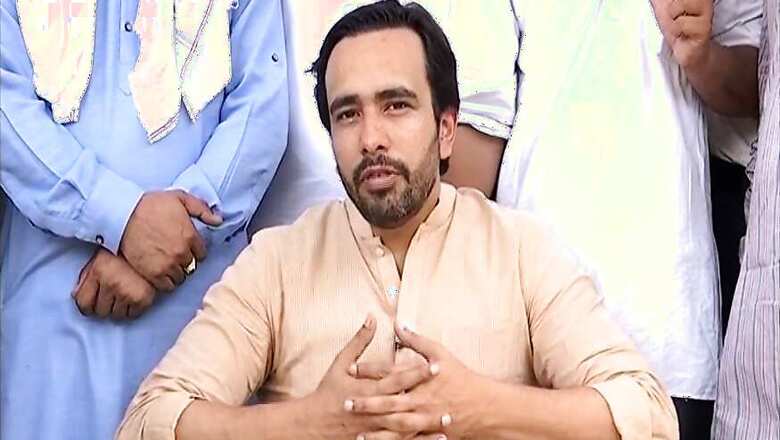
views
In this age of rising sons, he found himself ignored politically, sitting morose, the king without a crown. Jayant Chaudhary the Jat dynast now has a chance to revive his tattered destiny.
The victory of the Rashtriya Lok Dal (RLD) candidate supported by a united anti-BJP opposition in the Kairana Lok Sabha by-election gives Chaudhary a political breather. Just in time for 2019, he might think with a wink.
Born in Dallas - that saw an American president being killed – and the son of computer engineer Ajit Singh for whom, in 1978, C language meant computers and not Chaudharys.
The 40-year-old Jayant is the grandson of the tall Jat of western Uttar Pradesh, Chaudhary Charan Singh. The man who could control the movement of every farmer and every stalk of grain they grew in that region perhaps never thought of leaving a dynasty as his legacy. Like his simple, farmland origins, he had a simple desire: to be Prime Minister.
He made it to the post owing to a sordid display of politics the Janata Party indulged in as it disintegrated just three years after coming to power. He remained Prime Minister for under six months, gaining the dubious distinction of being the only Prime Minister never to have faced Parliament. With him, literally, the Janata Party experiment of 1977 died. But that is another story.
His son Ajit Singh, one of the earliest Indians to have been employed by IBM in the US, returned to India to take over from his father. A firm believer in the art of convenient politics, he had no qualms of siding with or supporting any political party – Congress or SP or BSP or BJP – so long as it got him some representation in the UP assembly and the Lok Sabha. And a Union cabinet berth for himself, of course.
Jayant is the third generation to enter the minefield of western UP. He made an impressive debut in the 2009 elections, winning the Mathura Lok Sabha seat. What transpired in that election perhaps locked his political fate for the next nine years, literally.
Mathura is Jat-dominated. It elected several Jats as MPs in the past. But, ironically, no one from the most famous Jat family ever made it from Mathura. Charan Singh’s wife Gayatri Devi lost from here in 1984. His daughter Gyanvati Singh lost in 2004. Baghpat was their family seat – Charan Singh won thrice, Ajit six times – but Mathura was proving the Holy Grail. Jayant managed to bury the jinx in 2009, winning from Mathura, but not on his own. He did get the Jat votes, thanks to his family credentials, but Mulayam Singh Yadav actually helped him win by not fielding a SP candidate. Jayant would reciprocate by helping Mulayam and his son Akhilesh in Mainpuri and Kannauj.
His tenure as an MP was nothing exceptional, though he was enthusiastic about Parliament passing a land acquisition bill. He served on several parliamentary committees as well. But politically, the years till 2014 were dreary, with the young Jat watching Jat sentiments getting swayed by the entry of Narendra Modi into the national picture. The Modi magic swept him away from Mathura in 2014, with BJP’s Hema Malini winning by a massive margin.
The subsequent elections to the UP Assembly further reduced his support among the Jats: the RLD managed to win a solitary seat – Chhaprauli in Baghpat district. The RLD contested from 284 of the 403 seats.
That, in a nutshell, was down in the dumps for the party and Jayant. Till the messianic phrase – united opposition – came his way. The “experiment” of a united opposition against the BJP in the Gorakhpur and Phulpur Lok Sabha bypolls emboldened the SP and the BSP to experiment yet again in Kairana. And they chose to support the RJD candidate.
Why? The Jat vote. It would not have been possible for either the SP or the BSP to sway that vote away from the BJP. The Jats are temperamental, they are also sentimental. There was a certain chance that given their anxiety over their economic condition in the last four years, a dose of sentiment might do the trick. As Charan Singh’s grandson, Jayant was the dose. In turn, if Jayant performed, he would have staked his claim as a tested constituent of the “mahaghatbandhan” and not as an also-ran.
Jayant saw in this by-election an opportunity to revive his lost political fortune and probably get back the Jat vote bank he lost to the BJP. He campaigned tirelessly. His pet campaign phrase worked quite a bit among the Jats who still respect Charan Singh: “BJP ki poonch nahi, RLD ki mooch bano”. He invoked the name of his grandfather and reminded the Jats of his legacy. He was campaigning for the by-election, but he was making his pitch for 2019.
As luck would have it, the BJP had queered its own pitch for his benefit. The Jat – even non-Jat -- farmers were angry because of mounting sugarcane arrears. Every time the BJP raised a polarising issue, Jayant retorted by countering: “Jinnah or Gannah (sugarcane?)” He was conveying to the “Hindu” farmers that the BJP’s attempt at religious polarisation meant ignoring the financial troubles of the sugarcane farmers. Peasants versus religion – that is the mantra he tried to drive into the people’s minds, leaving the BJP in a fix: How to polarise without antagonising the farmers?
The Kairana RLD candidate Tabassum Hasan was till recently in the Samajwadi Party. The campaign was literally run by the SP. Despite this, Jayant managed to address the RLD vote bank while not distancing himself from other supporting vote banks.
The Kairana victory now behind him, Jayant will want to analyse where exactly he stands in western UP. The big question is can he, like his father and grandfather before him, stand tall in a Jat farmer’s shoes? Will that pay him dividends in 2019?
He will try and extrapolate the caste figures of Kairana to see if he has struck a winning combination.
In Kairana, Jats number over 1.5 lakh. A sizeable portion of Jat votes plus the benefit of a united opposition in the form of nearly 5.5 lakh Muslim votes and 2.5 lakh Dalit votes apart from the Jatav votes were enough to see him through. The BJP, on the other hand, depended heavily on non-Yadav OBCs, Sainis, Kashyaps, Gujjars and the forward caste votes.
That’s too simple an equation, but a Jat-Muslim-Jatav combination in western UP can work wonders and Jayant knows that. He must be hoping the combination survives till 2019.



















Comments
0 comment